IN PICTURES
2024 Sony World Photography Awards: Environment category
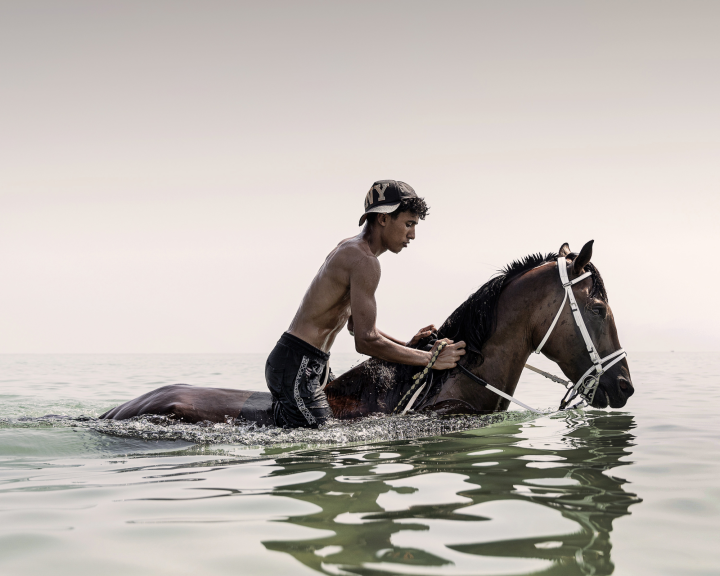
The Sony World Photography Awards returns to celebrate contemporary photography and the ways the arts reflect the world around us. Here is a selection of the images from the Professional competition in the environment category, with Mahé Elipe (France), Jean-Marc Caimi and Valentina Piccinni (Italy) and Maurizio Di Pietro (Italy) as finalists.

‘Massive Pesticide Poisoning of Beehives’. In spring 2023, just before the harvest, the beekeepers of San Francisco Suc-Tuc gazed upon empty hives in a collective apiary at Crucero Oxá. The bees had fallen victim to a massive poisoning incident, with researchers discovering more than 2.5 times the lethal dose of fipronil. The catastrophe affected more than 4,000 bee colonies and it is estimated it will take four years for them to recover. The Melipona bee is a rare species that doesn’t have a sting. It is seen as sacred by the Maya people, and its honey is said to have miraculous properties. It also embodies the resistance of indigenous communities in the region of Los Chenes, nestled in southeast Mexico, against the ravages of agro-industry. In March 2023 and more recently at the end of January 2024, a tragic fate befell more than one hundred beekeepers: their Melipona bees were poisoned by fipronil, an insecticide that is banned in most countries, but is still permitted in Mexico. This tragedy left deep scars on the Mayas, whose survival is intertwined with the golden nectar of the Melipona. Like an unrelenting tide, intensive agriculture is swallowing the Yucatan Peninsula, pushing back millennia-old jungles and threatening ancient practices. These images reflect the unshakeable determination of the Mayans, through individual and collective resistance, to leave behind an untarnished legacy for future generations. Image: © Mahé Elipe, France, Finalist, Professional competition, Environment, Sony World Photography Awards 2024
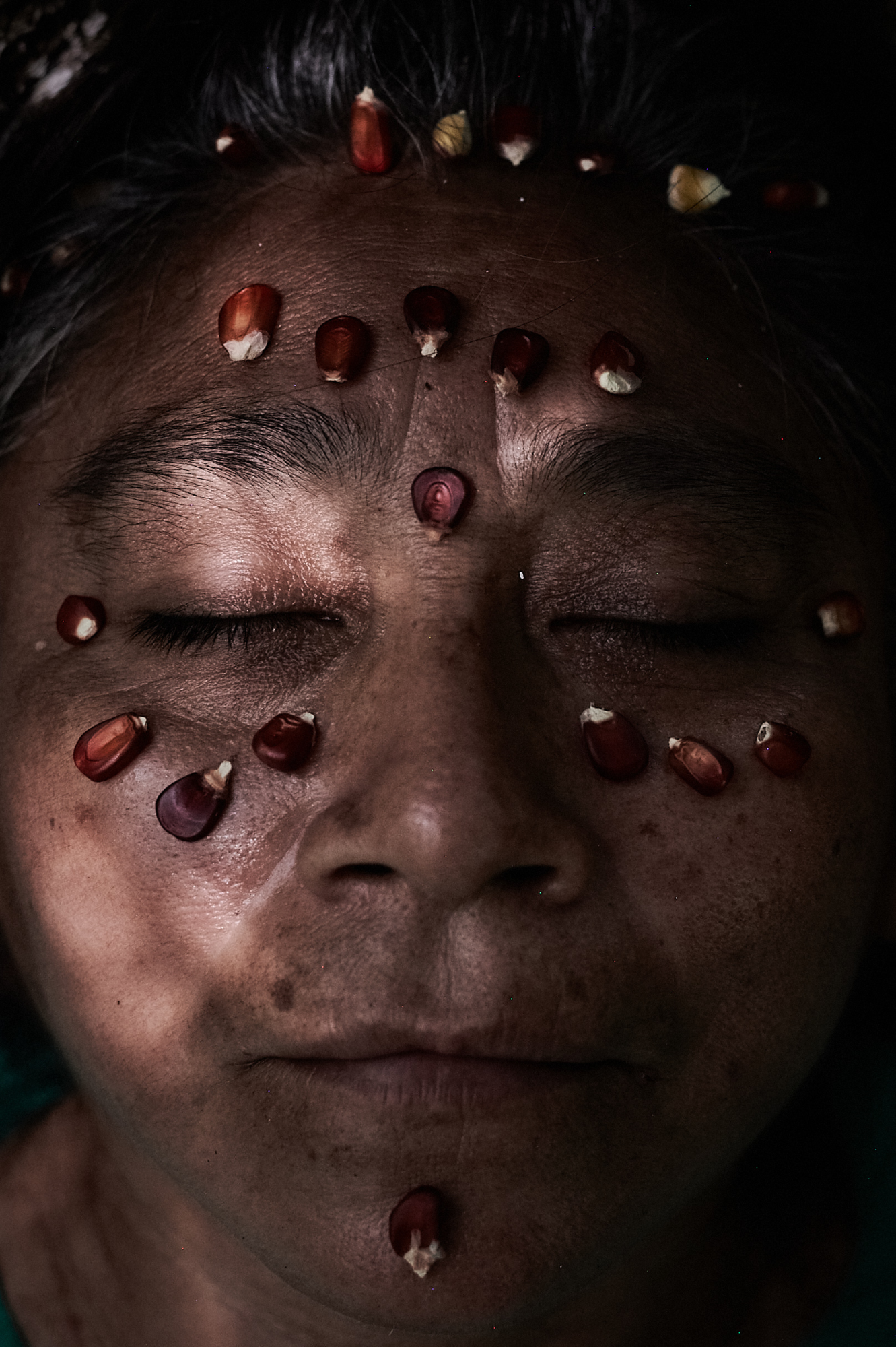
‘Doña Leocadia’. For 12 years, the indigenous association led by Leocadia Utiz has been organising a native corn seed fair. Farmers from participating communities are invited to exchange native seeds and forgotten indigenous knowledge. According to Mayan belief, Leocadia claims to be descended from corn. Together with her family, she ensures the protection of the forest by cultivating milpa. The Melipona bee is a rare species that doesn’t have a sting. It is seen as sacred by the Maya people, and its honey is said to have miraculous properties. It also embodies the resistance of indigenous communities in the region of Los Chenes, nestled in southeast Mexico, against the ravages of agro-industry. In March 2023 and more recently at the end of January 2024, a tragic fate befell more than one hundred beekeepers: their Melipona bees were poisoned by fipronil, an insecticide that is banned in most countries, but is still permitted in Mexico. This tragedy left deep scars on the Mayas, whose survival is intertwined with the golden nectar of the Melipona. Like an unrelenting tide, intensive agriculture is swallowing the Yucatan Peninsula, pushing back millennia-old jungles and threatening ancient practices. These images reflect the unshakeable determination of the Mayans, through individual and collective resistance, to leave behind an untarnished legacy for future generations. Image: © Mahé Elipe, France, Finalist, Professional competition, Environment, Sony World Photography Awards 2024
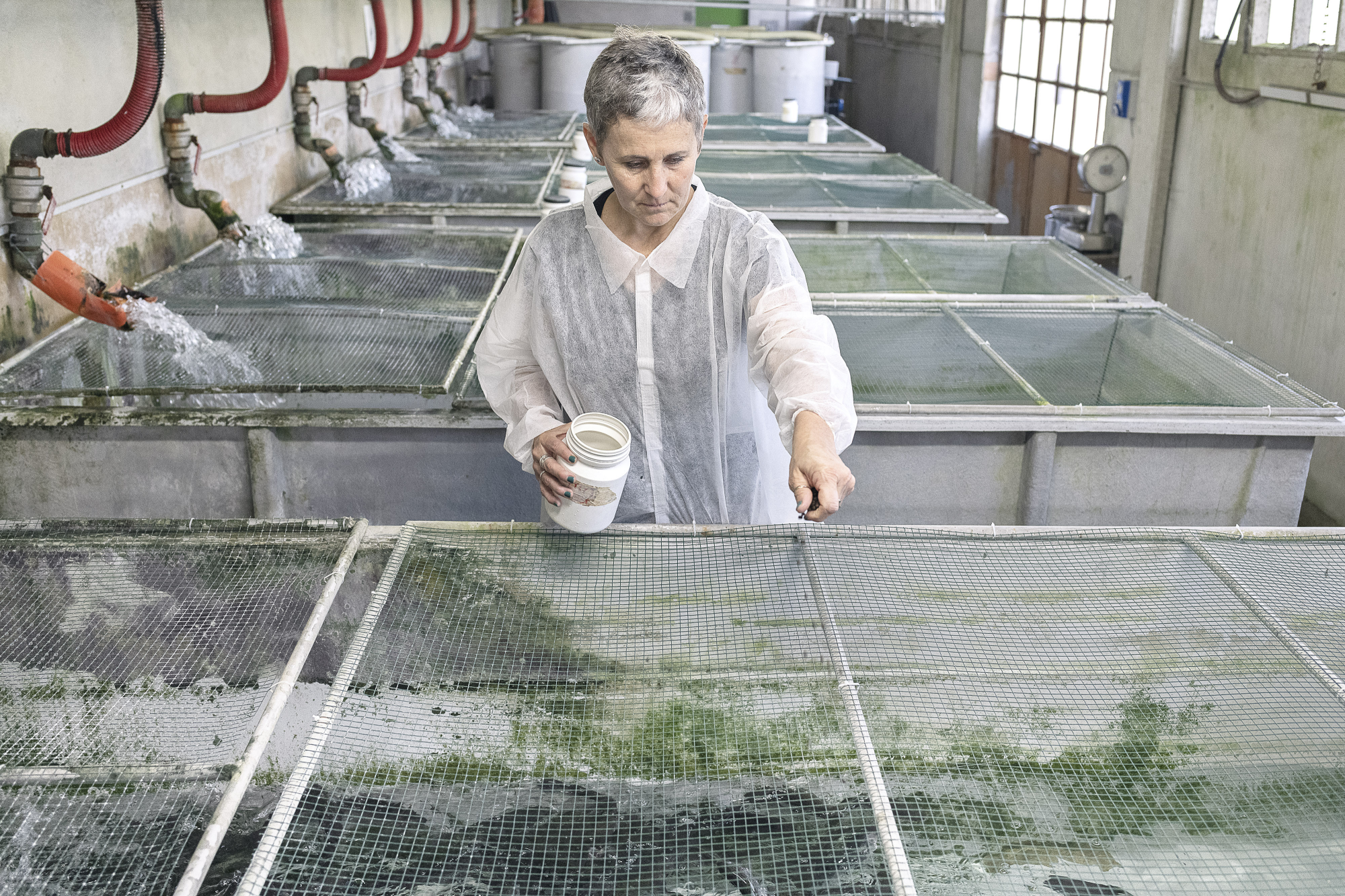
‘Insect Meals for Aquaculture’. Professor Laura Gasco evaluates the effects of the inclusion of Hermetia illucens flours in the diet of rainbow trout. The European Commission has allowed insect meals to be used in feed in aquaculture since 1 July 2017, having equated this protein source to that of poultry and pigs. The aim of the United Nations’ Sustainable Development Goal 2 is to create a world that is free of hunger by 2030 and focus on finding sustainable solutions to stop world hunger. Currently, the natural resources necessary for human survival are depleting due to climate change. Extreme weather, such as droughts and floods, have become more common and affect harvests, leading to less food for human consumption. However, breeding and eating insects is a sustainable practice that can help us reach our goal. Insects are rich in proteins and highly sustainable, with minimal environmental impact in terms of greenhouse gas emissions and water and soil consumption. As a result, researchers are studying the most sustainable and cost-effective ways to promote the use of insects as a food source for both people and animals. Image: © Maurizio Di Pietro, Italy, Finalist, Professional competition, Environment, Sony World Photography Awards 2024

‘Black Soldier Fly Farm’. Professor Laura Gasco from the Department of Agricultural, Forest and Food Sciences (DISAFA) at the University of Turin breeds Hermetia illucens at the facility’s research centre. Multiple projects are run with Hermetia illucens to evaluate the effects of insect meals in the diet of monogastric animals. Professor Gasco is removing the ‘eggie’ – the little box in the centre of the net – which is the media used to collect eggs. The aim of the United Nations’ Sustainable Development Goal 2 is to create a world that is free of hunger by 2030 and focus on finding sustainable solutions to stop world hunger. Currently, the natural resources necessary for human survival are depleting due to climate change. Extreme weather, such as droughts and floods, have become more common and affect harvests, leading to less food for human consumption. However, breeding and eating insects is a sustainable practice that can help us reach our goal. Insects are rich in proteins and highly sustainable, with minimal environmental impact in terms of greenhouse gas emissions and water and soil consumption. As a result, researchers are studying the most sustainable and cost-effective ways to promote the use of insects as a food source for both people and animals. Image: © Maurizio Di Pietro, Italy, Finalist, Professional competition, Environment, Sony World Photography Awards 2024
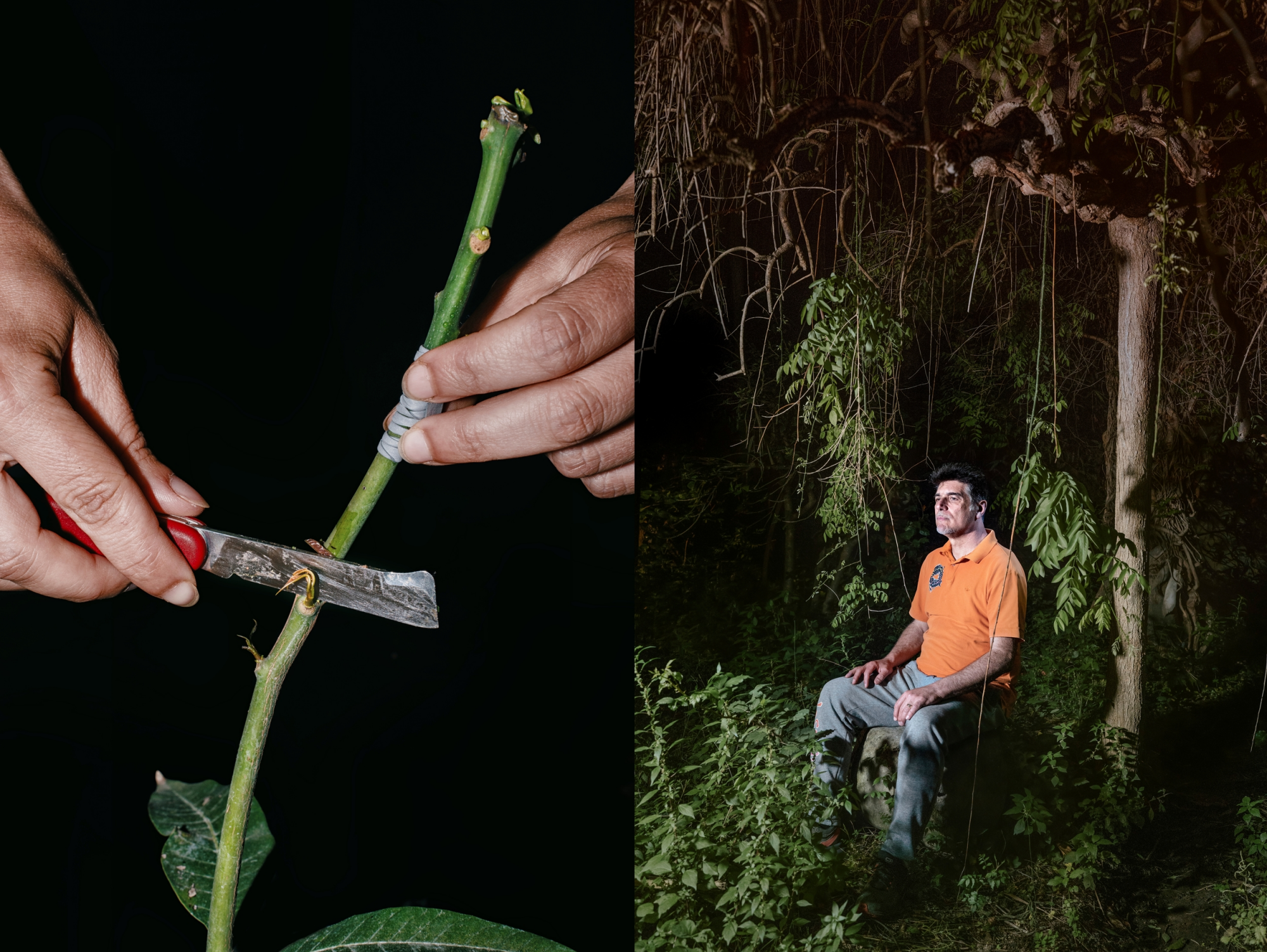
‘Tropicalia’. Mango shoots are prepared for grafting as Sicilian farmers shift from citrus to tropical groves due to rising demand and the rapidly changing climate. Entrepreneur Francesco Verri spearheads a network of small-scale growers in Messina, cultivating lesser-known tropical fruits. His vision is to establish a ‘made in Sicily’ tropical fruits brand, raising awareness among everyday consumers. Sicily was once Europe’s main wheat producer, but it now faces the challenges of being a climate frontier, dealing with issues such as rising temperatures, desertification, unpredictable rainfall patterns and flash floods. As a pioneer in Europe’s response to tropicalisation, Sicily serves as an example of the scenario that awaits the whole continent. This series consists of a series of human, scientific and agricultural stories that explore the emerging realities amidst ongoing climate change. It highlights the efforts of local universities to drive agricultural innovation, test weather-resistant organic crops and introduce new fertilisers tailored to desertified land. The story also follows the burgeoning weather-sensitive tropical fruit industry in Sicily, where farmers are transforming their crops into extensive mango, avocado and papaya plantations to turn the weather challenge into a new opportunity. Image: © Jean-Marc Caimi & Valentina Piccinni, Italy, Finalist, Professional competition, Environment, Sony World Photography Awards 2024
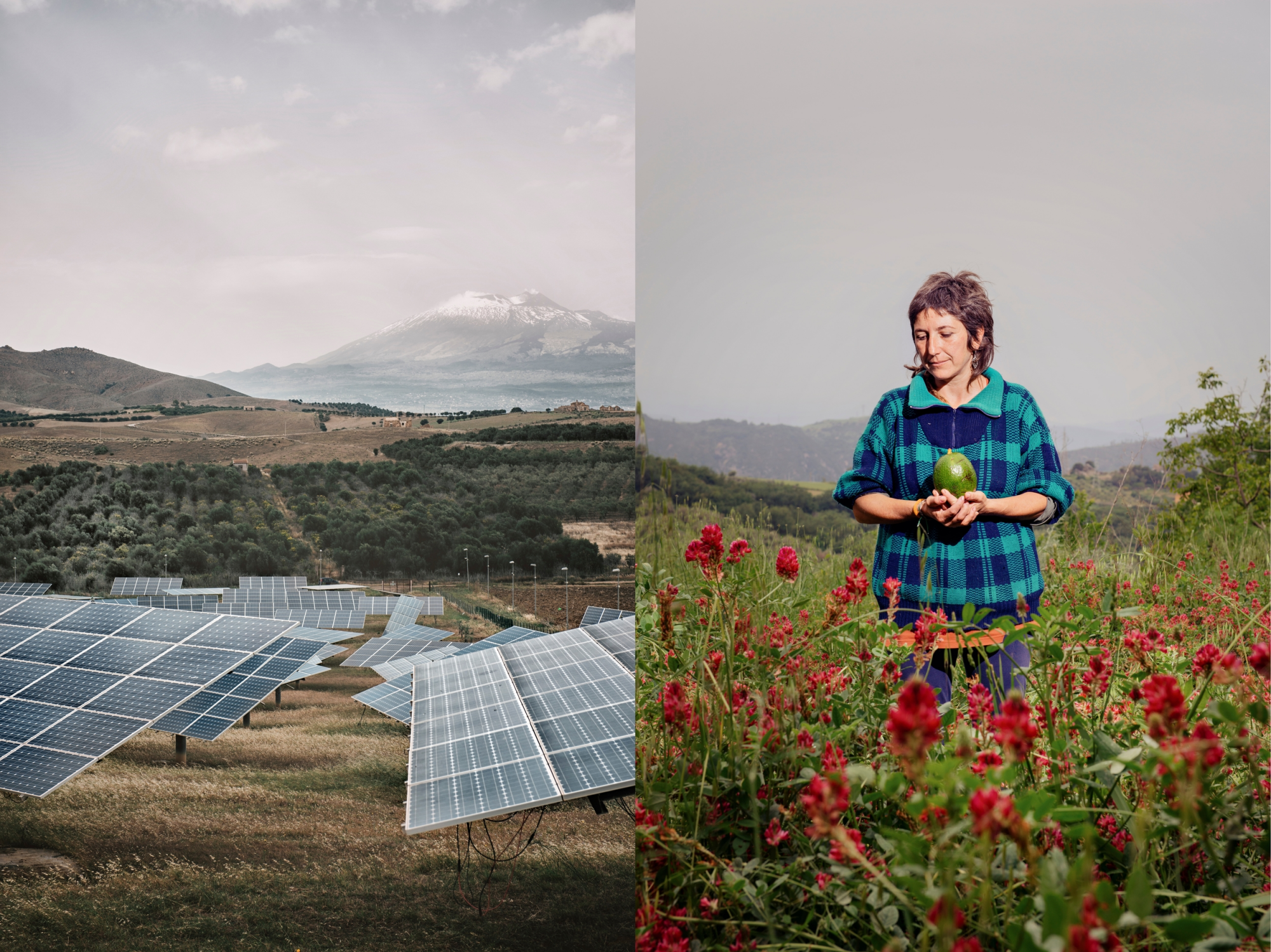
‘Tropicalia’. Climate change is prompting Sicilian farmers to give up their land to host photovoltaic and agrovoltaic systems, potentially threatening food sovereignty. Elena Giorgianni, a naturopath and farmer, is resisting the trend by growing tropical fruits organically in the hills around Messina. Taking advantage of the new weather conditions and the demand for high-quality Italian tropical fruits, she is pioneering an approach that balances environmental sustainability with consumer preferences. Image: © Jean-Marc Caimi & Valentina Piccinni, Italy, Finalist, Professional competition, Environment, Sony World Photography Awards 2024

‘The Holy Dip’. A woman takes a holy dip in the polluted Yamuna river during the Chhath Mahaparv festival. This series shares images from one of the biggest festivals celebrated in India: Chhath Mahaparv. It depicts the festival being celebrated in the sacred Yamuna river, which is now heavily polluted by acidic wastewater spilling out from big factories. The pollution has made the water harmful to both flora and fauna. Image: © Sachin Ghai, India, Shortlist, Professional competition, Environment, Sony World Photography Awards 2024
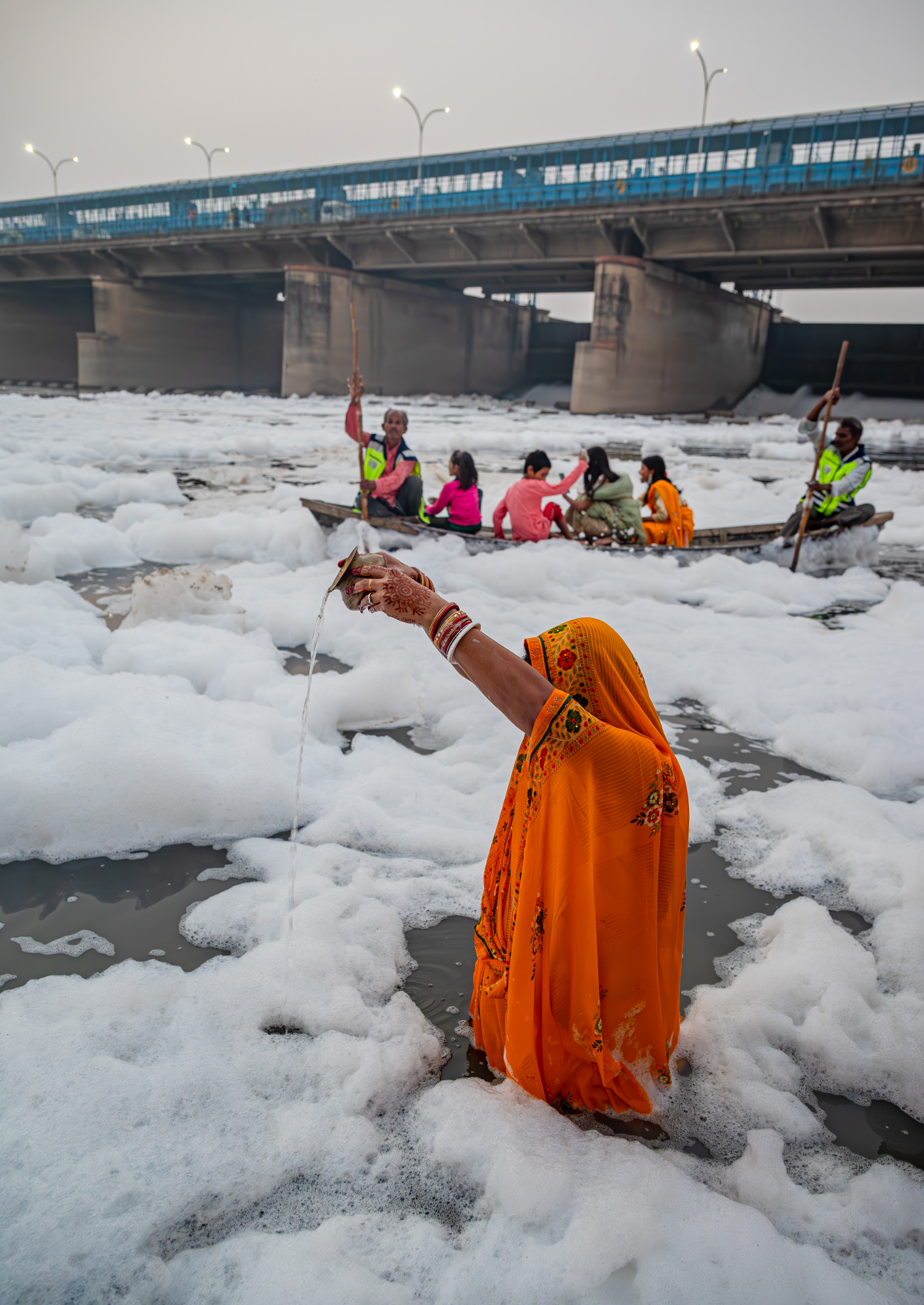
‘Surya Argh’. A woman offers ‘Jal’ (water) to the sun, as she stands in the Yamuna river during Chhath Mahaparv. This series shares images from one of the biggest festivals celebrated in India: Chhath Mahaparv. Image: © Sachin Ghai, India, Shortlist, Professional competition, Environment, Sony World Photography Awards 2024
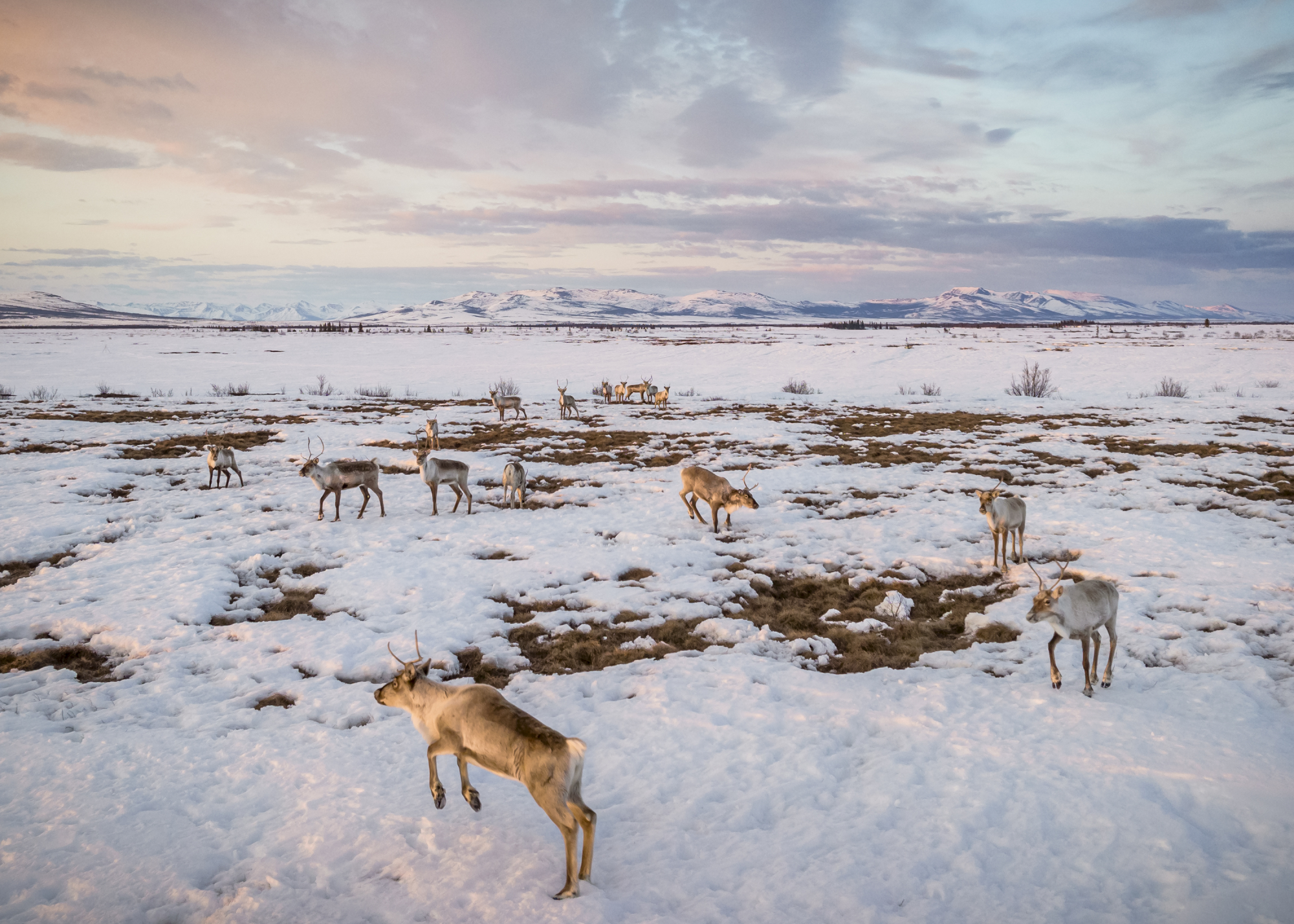
‘Vanishing Caribou’. The Western Arctic caribou herd migrates towards its birthing grounds near Ambler, Alaska. This was once the biggest caribou herd in the world, but since 2003 its numbers have reduced from 500,000 animals to 188,000, with a quarter of those losses happening in the past three years. Shockingly, plans are moving ahead to build the 211-mile-long Ambler Road, a mining road that will cut straight across the herd’s migration path. Arctic caribou populations are in shocking decline. Over the last 20 years their numbers have dropped from five million animals to approximately two million, and this enormous loss threatens to put even more pressure on the fragile ecosystem of the Arctic, as well as the indigenous communities across Alaska and Canada who depend on caribou as a vital food source. The plight of the caribou reveals just how entangled the ecology of our planet is and their disappearance is a far greater story than that of a single species: it is a mirror of the broader issues relating to the climate crisis and biodiversity loss that is happening all over the world. Image: © Kathleen Orlinsky, United States, Shortlist, Professional competition, Environment, Sony World Photography Awards 2024
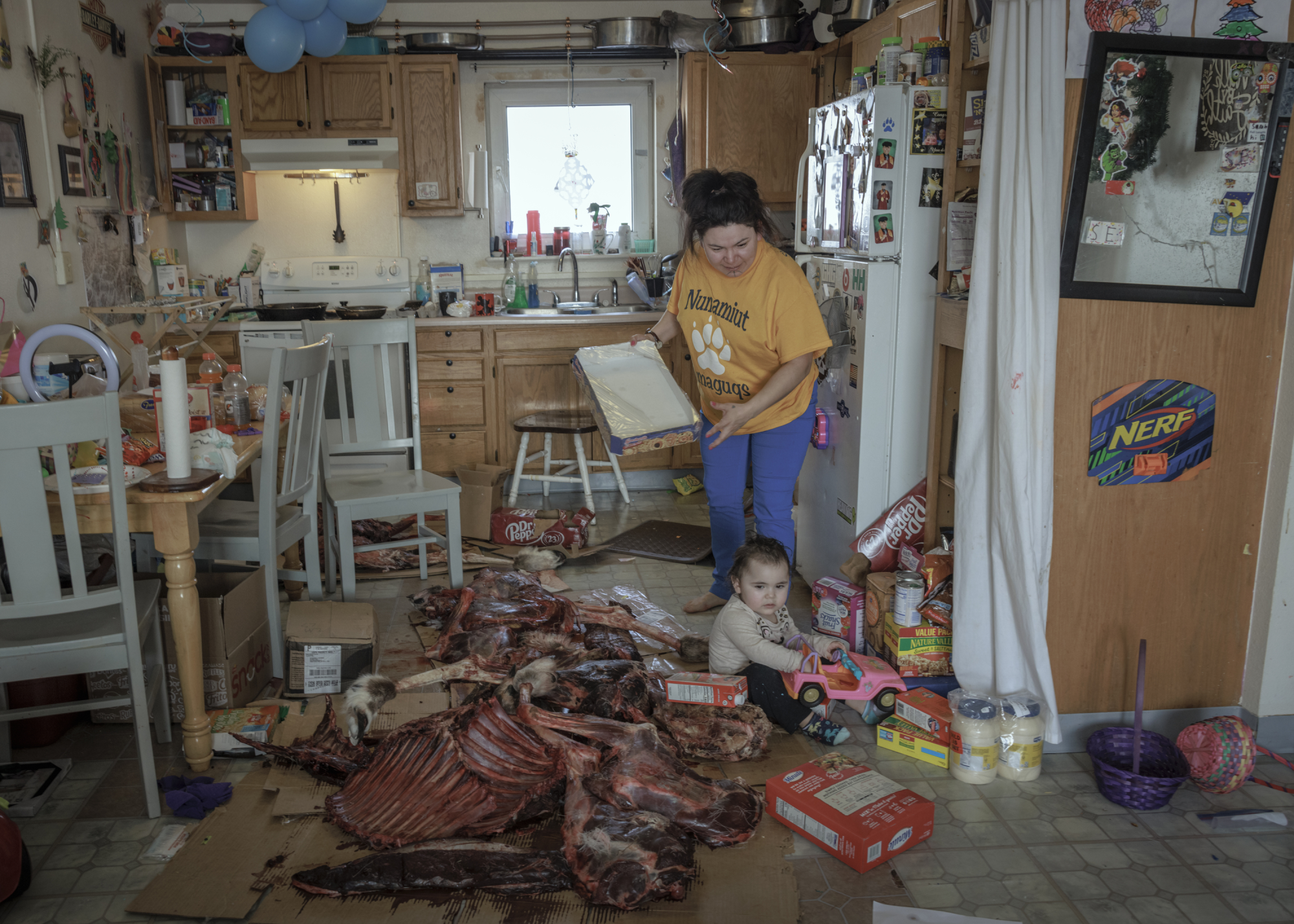
‘Vanishing Caribou’. Casey Edwards processes a caribou hunted by her brother, watched by her one-year-old daughter, Ellie Lu. Caribou is the single most important source of fresh food and protein in Anaktuvuk Pass, as the village is not connected to the road system, which means groceries have to be flown in. The community was only founded in 1957 when the Bureau of Indian Affairs forced the Nunamiut to settle. Arctic caribou populations are in shocking decline. Over the last 20 years, their numbers have dropped from five million animals to approximately two million, and this enormous loss threatens to put even more pressure on the fragile ecosystem of the Arctic, as well as the indigenous communities across Alaska and Canada who depend on caribou as a vital food source. Image: © Kathleen Orlinsky, United States, Shortlist, Professional competition, Environment, Sony World Photography Awards 2024

The climate crisis is accelerating the extinction of species in Germany. The long-term survival of great tits is now considered to be at risk, as caterpillars – a key food source for great tit chicks – are turning into butterflies earlier. As the great tits cannot adjust their breeding times quickly enough, their chicks increasingly risk starvation. According to one study, the birds could become extinct by 2100 due to climate change. Globally, the summer of 2023 was the hottest on record. In Germany, temperatures have risen more than the worldwide average, and according to the German Weather Service, the period from 2011 to 2020 was approximately two degrees Celsius warmer than the years from 1881 to 1910. As a leading car nation, Germany has a problem: it must become climate-neutral by 2045. It is a race against time and economic interests, political ideologies and potential solutions are being debated at an increasingly heated level. My photographic essay describes a journey through Germany, focusing on a country at the centre of an ecological and social transformation. The photographs portray a land caught between hope and dystopia, exploring the question: can one make the invisible aspects of the climate crisis visible? Image: © Maximilian Mann, Germany, Shortlist, Professional competition, Environment, Sony World Photography Awards 2024
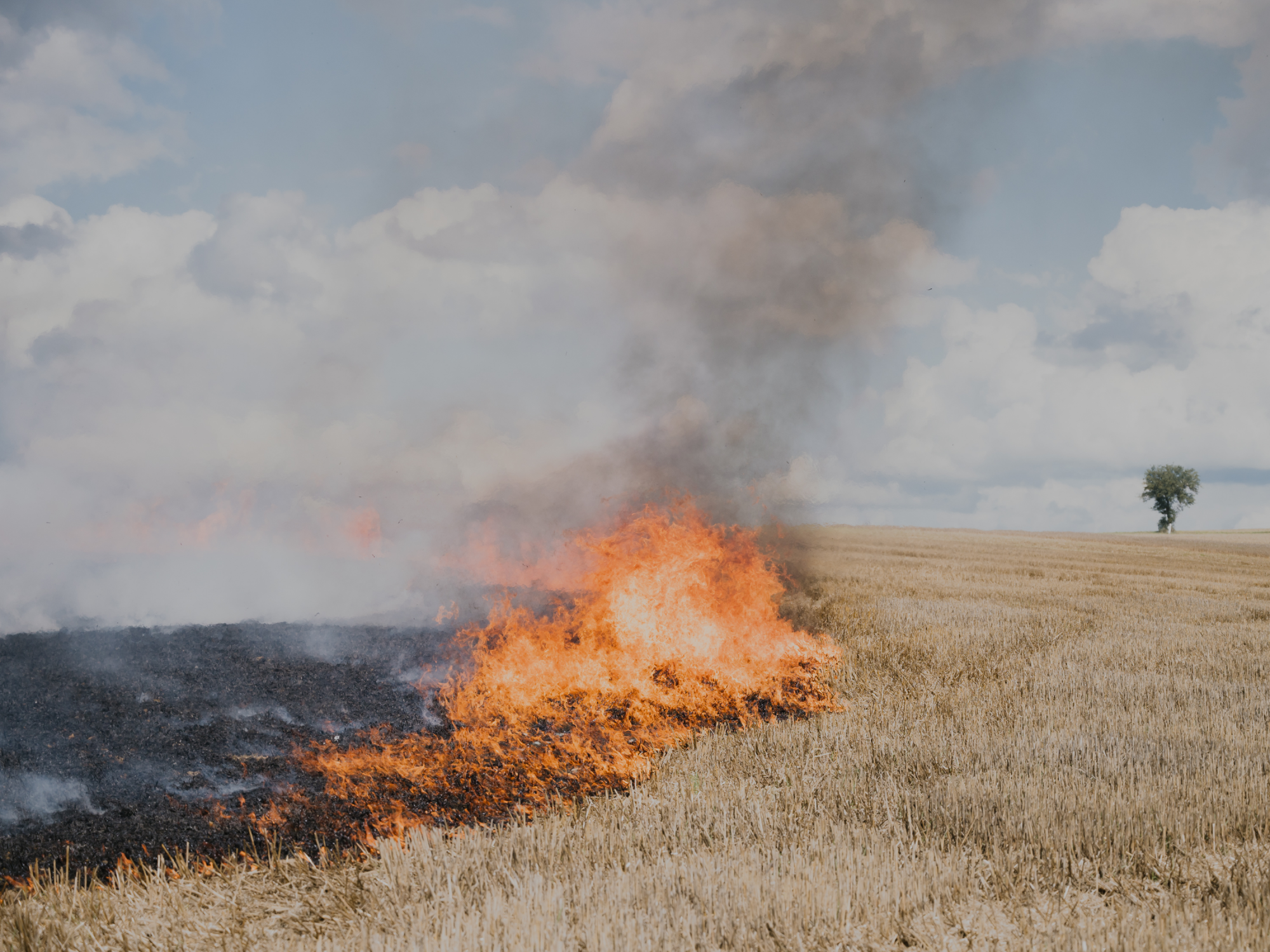
Wildfire training for the volunteer fire brigade in Newel, led by the company Euro-Waldbrand. An increased interest in training to fight wildfires and forest fires reflects the growing threat of them occurring in Germany. The changing climate significantly increases the risk of forest fires in coming decades, as so-called ‘fire weather’ – characterised by high temperatures, little precipitation and strong winds – will occur more frequently. Globally, the summer of 2023 was the hottest on record. Image: © Maximilian Mann, Germany, Shortlist, Professional competition, Environment, Sony World Photography Awards 2024
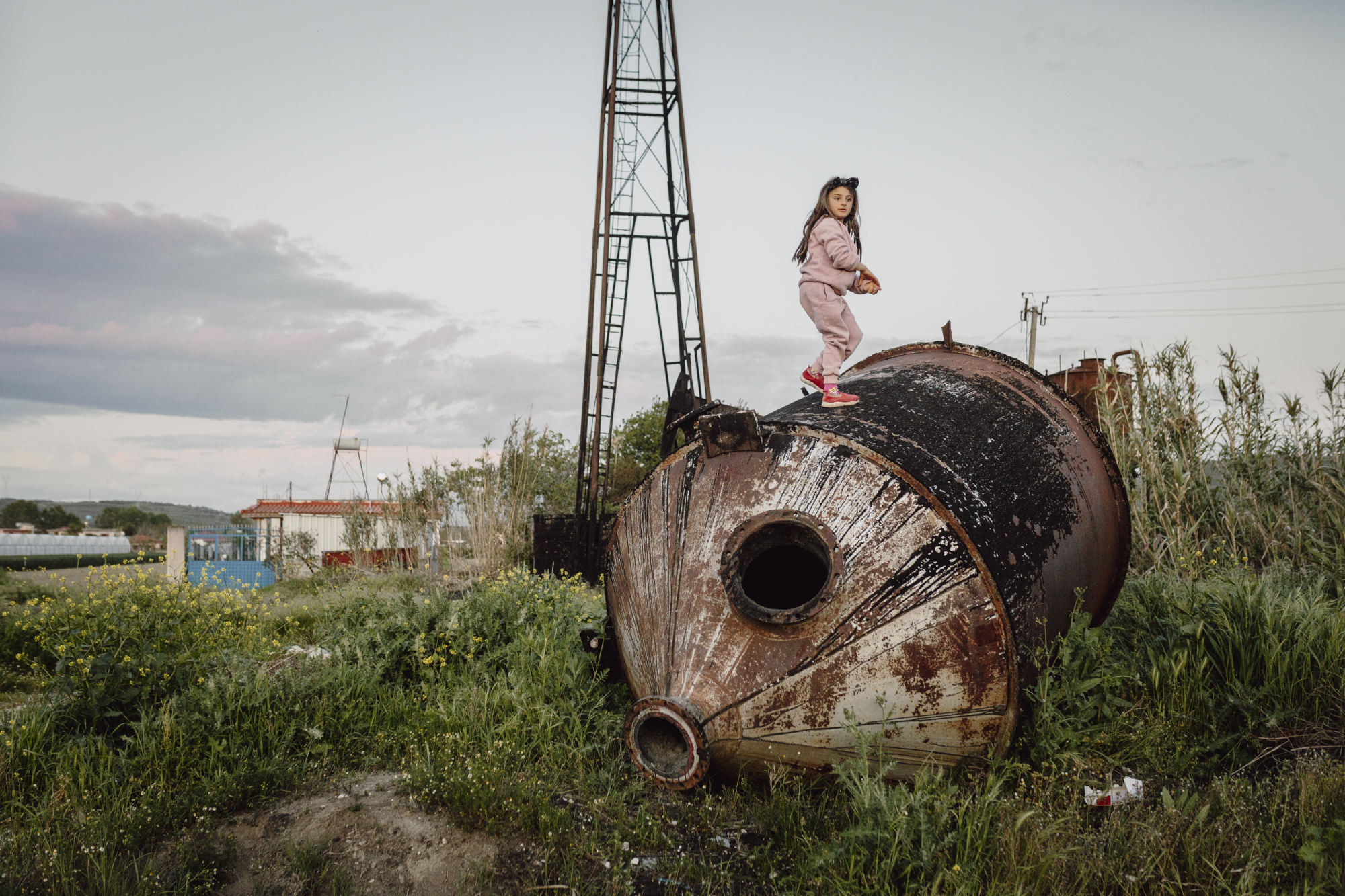
A girl climbs on an old oil tank near a defunct oil well in the village of Zharrëz. Albania is one of the poorest European countries, with a per capita income of US$4,500. Yet it has a subsoil that is rich in crude oil, with more than 5.3 billion barrels lying beneath the surface. During the communist dictatorship of Enver Hoxha, the country was isolated, leaving it open only to Soviet and Chinese influences. These relationships led to the development of the technological capabilities necessary to begin tapping into Albania’s oil wells, but since the fall of the regime, free market capitalism has taken hold. Now, various corporations, including Bankers Petroleum, a Canadian company recently acquired by China’s Geo-Jade Petroleum, own 95 percent of crude oil extraction in the Patos-Marzina region. This seismic shift in the market has caused significant social and environmental issues, including contaminated lakes, oil leaks, abandoned structures, the poisoning of underground water wells and emissions that affect the surrounding villages. Image: © Jonas Kakó, Germany, Shortlist, Professional competition, Environment, Sony World Photography Awards 2024
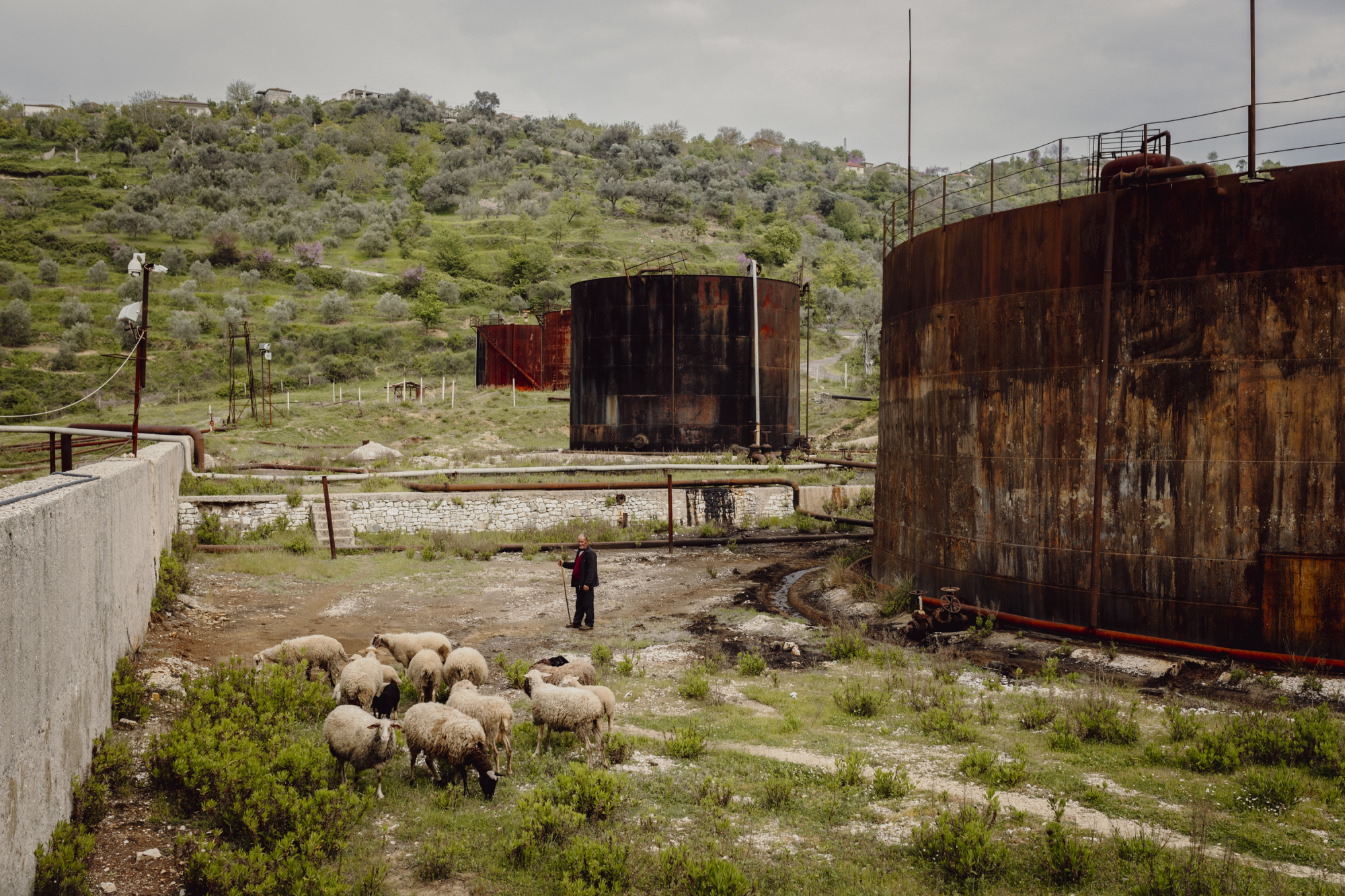
Arben Cela, a retired worker from the local refinery, tends his sheep at the Alpetrol oil treatment facility near Ballsh. The smell of gas and oil is always present. Image: © Jonas Kakó, Germany, Shortlist, Professional competition, Environment, Sony World Photography Awards 2024

‘A Lost Place’. Left: Preserved specimen of a koala, archived in the Grant Museum of Zoology, London. Right: This image uses my own archival photograph from my homeland, which was then painted, scratched and reworked. “These images are a heartfelt reaction to the dramatically increased global threat from destructive wildfires, which have recently wrought devastation in numerous countries, particularly in my homeland, Australia. Images featuring preserved Victorian museum specimens of indigenous wildlife brought back to the UK by Australia’s colonising powers serve as an ironic counterpoint to the millions of contemporary living creatures that have perished. My own archival photographs from Australia have been stripped of their original peaceful quality with the addition of oils and inks. I also scratched and reworked them to represent both the violent power of these conflagrations and my fear and anger at such devastation, my own hand attempting to control the uncontrollable. The intervention of my brushstrokes on the prints is intended to mirror human intervention in nature, and to implant into them my emotional response to nature’s continual destruction, whilst simultaneously trying to find beauty and hope amidst the tragedy of these lost places.” Image: © Aletheia Casey, Australia, Shortlist, Professional competition, Environment, Sony World Photography Awards 2024

‘A Lost Place’. A reimagined landscape near Wagga Wagga (Wiradjuri Land), which has been painted and scratched. Wagga Wagga has been facing serious drought conditions for years, with regular water restrictions and water bans, and a continued threat of wildfires. These images are a heartfelt reaction to the dramatically increased global threat from destructive wildfires, which have recently wrought devastation in numerous countries, particularly in my homeland, Australia. Image: © Aletheia Casey, Australia, Shortlist, Professional competition, Environment, Sony World Photography Awards 2024

Solar panels in the desert (Jordan). Jordan, Syria, Lebanon, Libya, Egypt, Saudi Arabia and Tunisia all have a vulnerability risk to water scarcity of close to 80 percent. In such a complex geopolitical region, water could be a decisive factor provoking conflict in coming years. The threshold defined by the United Nations for water scarcity is 500,000 litres per person, per year. However, in the Middle East and desert countries, water scarcity is starting to become a reality: Jordan is the second country in the world with a shortage of this basic resource, and its annual renewable water resources are currently less than 100 cubic metres (100,000 litres) per person. In urban areas, water supplies are typically replenished once a week, while in rural areas they are replenished less than once every two weeks, with reduced frequency during summer. Image: © Javier Arcenillas, Spain, Shortlist, Professional competition, Environment, Sony World Photography Awards 2024 DM





















 Become an Insider
Become an Insider
Probably better than all of these would be a picture of a human foetus in the womb, in a world where people clamour for the right to abort. That is an image of environmental hell.
And I can send this because I wasn’t aborted.
Reading the stories behind the photos you realise that HUMANITY is the planets worst nightmare, the pestilence that won’t go away. There are also stories,very few, of great human achievements but oh sooo few
Stunning! Very effective!
So farmers in Sicily are changing from citrus to mangoes, avocados and papaya (my favourite fruits), while in the Western Cape they are moving from grapes and deciduous fruit to citrus.
Very interesting.
These photos show clearly how farms of solar PV panels can be destructive. They are not a universal solution to our insatiable demand for energy.
This comment conveniently ignores the mch larger areas sterilized by the coal alternative prevalent in SA.
A study around 1970 by Dr AJ Neethling for the then Dept of Energy found that the nominal power per square km for a SA coal-fired power station in fertile Mpumalanga was below that of a solar PV power plant in the arid Northern Cape, when the very substantial areas of the mines, ash heaps and coal transport & storage were included.
What is more, that comparison was for the then 15% efficient PV panels, whereas current 22.5% efficient panels of similar size now deliver about 50% more power from the same area.
And coal poisons and sterilizes valuable agricultural land in Mpumalanga, whereas solar PV can be used everywhere — including on roofs, as shading for carports, and on inhospitable desert land. Where the shade it provides, as well as protection against frost, actually enhances the environment if it is done the environmentally conscious European way –rather than the pictured crass American way.